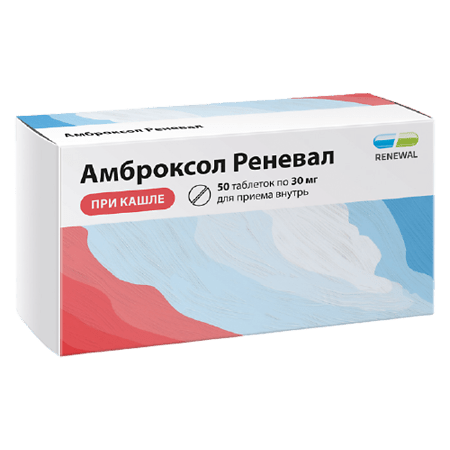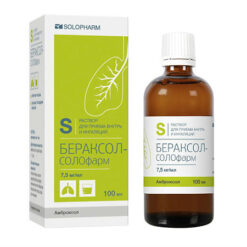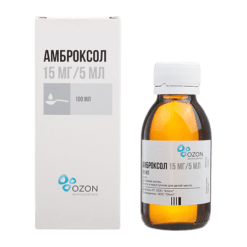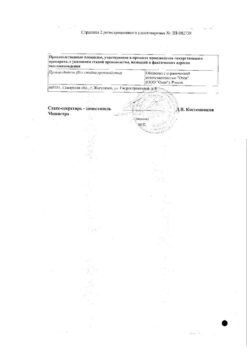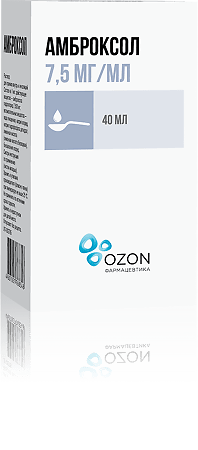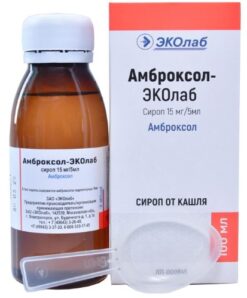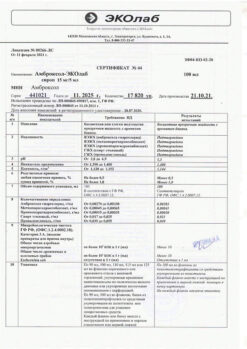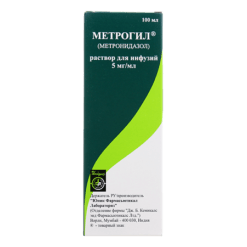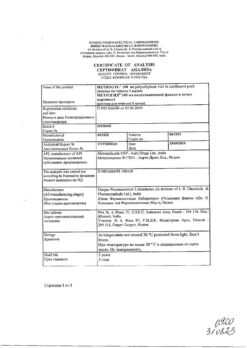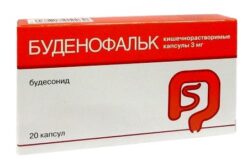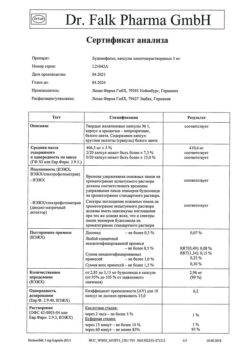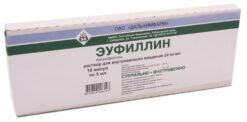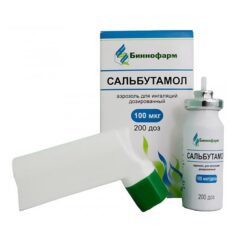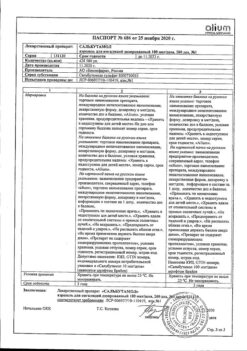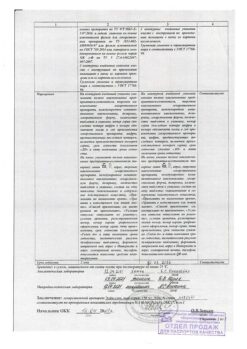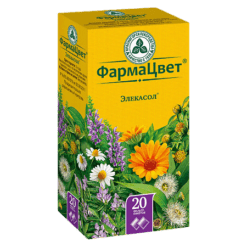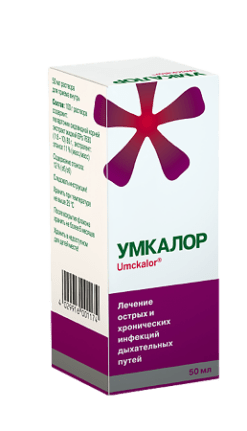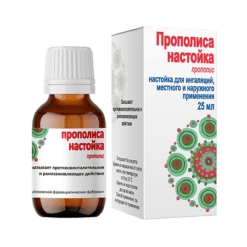No products in the cart.
Ambroxol Reneval, tablets 30 mg 50 pcs
€6.23 €5.45
Description
Pharmacotherapeutic group: expectorant, mucolytic.
The ATC code: R05CB06
Pharmacological properties
Pharmacodynamics
Ambroxol is the active N-demethylated metabolite of bromhexine.
It has secretomotor, secretolytic and expectorant effects.
Stimulates bronchial glands, increases motor activity of the atomizing epithelium by influencing type 2 pneumocytes in the alveoli and Clara cells in the bronchioles, increases formation of endogenous surfactant – a surfactant that ensures gliding of bronchial secretion in the airway lumen. Ambroxol increases the proportion of the serous component in the bronchial secretion, improving its structure and contributing to reduction of viscosity and liquefaction of sputum; as a result, mucociliary transport is improved and expulsion of sputum from the bronchial tree is facilitated.
On average when taken orally, the action of the drug starts within 30 minutes; its duration of action is 6-12 hours, depending on the dose taken.
Pharmacokinetics
Absorption.After oral administration, ambroxol is rapidly and almost completely absorbed from the gastrointestinal tract. The maximum concentration (Cmax) in blood plasma is reached after 1-3 hours. Volume of distribution is 552 l. Absolute bioavailability of ambroxol in oral administration as a result of “primary passage” through the liver is reduced by approximately 1/3.
Distribution.The binding to plasma proteins is 80-90%. Ambroxol penetrates through the placental and blood-brain barrier, is excreted with breast milk.
Metabolism. Ambroxol is metabolized in the liver by conjugation to form pharmacologically inactive metabolites.
Elimation. The terminal blood plasma elimination half-life (T1/2) is 7-12 hours. The total half-life of ambroxol and its metabolites is about 22 hours. Total clearance is within 660 ml/min. Excreted by the kidneys: 90% as metabolites (such as dibromoanthranilic acid, glucuronides), about 10% – unchanged. In severe renal impairment (creatinine clearance less than 30 ml/min) accumulation of ambroxol metabolites is possible; in severe hepatic failure ambroxol clearance is reduced by 20-40 %.
Due to the high degree of binding to plasma proteins and significant volume of distribution, as well as slow reverse distribution from tissues into blood, effective elimination of ambroxol by dialysis or forced diuresis is unlikely.
Indications
Indications
Impaired secretion and transport of sputum in acute and chronic respiratory diseases: acute and chronic bronchitis, pneumonia, chronic obstructive pulmonary disease, bronchial asthma, bronchiectasis.
Pharmacological effect
Pharmacological effect
Pharmacotherapeutic group: expectorant, mucolytic agent.
ATX code: R05CB06
Pharmacological properties
Pharmacodynamics
Ambroxol is an active N-demethylated metabolite of bromhexine.
It has secretomotor, secretolytic and expectorant effects.
Stimulates the work of the bronchial glands, increases the motor activity of the ciliated epithelium by affecting type 2 pneumocytes in the alveoli and Clara cells in the bronchioles, enhances the formation of endogenous surfactant – a surfactant that ensures the sliding of bronchial secretions in the lumen of the respiratory tract. Ambroxol increases the proportion of the serous component in the bronchial secretion, improving its structure and helping to reduce viscosity and thin the sputum; as a result, mucociliary transport improves and the removal of sputum from the bronchial tree is facilitated.
On average, when taken orally, the effect of the drug occurs within 30 minutes, the duration of action is 6-12 hours, depending on the dose taken.
Pharmacokinetics
Suction. After oral administration, ambroxol is quickly and almost completely absorbed from the gastrointestinal tract. The maximum concentration (Cmax) in blood plasma is achieved after 1-3 hours. The distribution volume is 552 l. The absolute bioavailability of ambroxol when taken orally as a result of “primary passage” through the liver is reduced by approximately 1/3.
Distribution. Communication with blood plasma proteins is 80-90%. Ambroxol penetrates the placental and blood-brain barriers and is excreted in breast milk.
Metabolism. Ambroxol is metabolized in the liver by conjugation to form pharmacologically inactive metabolites.
Excretion. The terminal half-life from blood plasma (T1/2) is 7-12 hours. The total half-life of ambroxol and its metabolites is about 22 hours. The total clearance is within 660 ml/min. Excreted by the kidneys: 90% in the form of metabolites (such as dibromoanthranilic acid, glucuronides), about 10% unchanged. In case of severe renal dysfunction (creatinine clearance less than 30 ml/min), accumulation of ambroxol metabolites is possible; in severe liver failure, the clearance of ambroxol is reduced by 20-40%.
Due to the high degree of binding to plasma proteins and the significant volume of distribution, as well as the slow reverse distribution from tissues to the blood, effective elimination of ambroxol by dialysis or forced diuresis is unlikely.
Special instructions
Special instructions
During treatment, it is necessary to drink a lot of fluids (juices, tea, water), as this enhances the mucolytic effect of the drug.
Ambroxol should not be taken simultaneously with antitussive drugs that impede the removal of sputum.
Ambroxol should be taken with caution in patients with a weakened cough reflex or impaired mucociliary transport due to the possibility of sputum accumulation.
Patients taking ambroxol should not be advised to perform breathing exercises; in patients with severe disease, aspiration of liquefied sputum should be performed.
In patients with bronchial asthma, ambroxol may increase cough.
In patients with severe skin lesions – Stevens-Johnson syndrome or Lyell’s syndrome – fever, body pain, rhinitis, cough and sore throat may appear in the early phase. During symptomatic treatment, it is possible to erroneously prescribe mucolytic drugs such as ambroxol. There are isolated reports of the identification of Stevens-Johnson syndrome and Lyell’s syndrome, which coincided with the prescription of the drug; however, there is no causal relationship with the drug. If the above syndromes develop, it is recommended to stop treatment and immediately seek medical help.
If kidney function is impaired, the drug should be used only on the recommendation of a doctor.
Instructions for patients with diabetes: 1 tablet contains less than 0.01 bread units.
Impact on the ability to drive vehicles and machinery
There were no cases of the drug affecting the ability to drive vehicles and machinery. Studies on the effect of the drug on the ability to drive vehicles and engage in other potentially hazardous activities that require increased concentration and speed of psychomotor reactions have not been conducted.
Active ingredient
Active ingredient
Ambroxol
Composition
Composition
Active ingredient: ambroxol hydrochloride – 30.0 mg; excipients: lactose monohydrate, corn starch, colloidal silicon dioxide (aerosil), magnesium stearate
Pregnancy
Pregnancy
The use of the drug in the first trimester of pregnancy and during breastfeeding is contraindicated. The use of the drug in the II-III trimesters of pregnancy is possible only after a careful assessment of the balance between the benefits of treatment and possible risks.
Contraindications
Contraindications
Hypersensitivity to the components of the drug, hereditary galactose intolerance, lactase deficiency or glucose and galactose malabsorption syndrome, first trimester of pregnancy and breastfeeding, children under 6 years of age.
With caution
Impaired bronchial motility and increased mucus secretion (for example, in the rare syndrome of primary ciliary dyskinesia); renal failure and/or severe liver failure); peptic ulcer of the stomach and duodenum, including a history; II-III trimesters of pregnancy.
Side Effects
Side Effects
Classification of the incidence of side effects according to the recommendations of the World Health Organization (WHO):
very often > 1/10; often from > 1/100 to 1/1000 to 1/10000 to < 1/1000; very rarely <1/10000, including isolated reports; frequency unknown - based on available data, it is not possible to determine the frequency of occurrence.
Allergic reactions:
frequency unknown – hypersensitivity reactions, anaphylactic reactions (including anaphylactic shock), angioedema.
From the digestive system:
often – nausea, decreased sensitivity in the mouth or pharynx; uncommon – dyspepsia, vomiting, diarrhea, abdominal pain; rarely – heartburn, dryness of the mucous membrane of the mouth and pharynx, constipation.
From the respiratory system:
rarely – dryness of the mucous membrane of the respiratory tract, rhinorrhea (discharge of mucus from the nose).
From the skin:
rarely – skin rash, urticaria; frequency unknown – pruritus, Stevens-Johnson syndrome (erythema multiforme exudative), Lyell’s syndrome (toxic epidermal necrolysis), acute generalized exanthematous pustulosis.
From the senses:
infrequently – dysgeusia (disturbances in the sense of taste).
Others:
rarely – weakness, headache, dysuria (impaired urination), hyperthermia, fever.
Interaction
Interaction
With the simultaneous use of ambroxol with antitussive drugs, it may be difficult to discharge sputum as a result of suppression of the cough reflex.
When used simultaneously with amoxicillin, cefuroxime, erythromycin, and doxycycline, ambroxol increases their concentration in bronchial secretions.
Overdose
Overdose
Symptoms: nausea, vomiting, diarrhea, pain in the upper abdomen, heartburn, dyspepsia (indigestion). There are reports of short-term anxiety. In case of severe overdose, a significant decrease in blood pressure is possible.
Treatment: artificial vomiting, gastric lavage in the first 1-2 hours after taking the drug, taking fat-containing foods, symptomatic therapy. Due to the high degree of binding of ambroxol to plasma proteins and the large volume of distribution, hemodialysis or forced diuresis is not advisable.
Storage conditions
Storage conditions
At a temperature not exceeding 30 °C.
Keep out of the reach of children.
Shelf life
Shelf life
5 years.
Do not use after expiration date.
Manufacturer
Manufacturer
Update of PFC JSC, Russia
Additional information
| Shelf life | 5 years. Do not use after the expiration date. |
|---|---|
| Conditions of storage | At a temperature not higher than 30 ° C. Keep out of reach of children. |
| Manufacturer | Update PFC AO, Russia |
| Medication form | pills |
| Brand | Update PFC AO |
Other forms…
Related products
Buy Ambroxol Reneval, tablets 30 mg 50 pcs with delivery to USA, UK, Europe and over 120 other countries.

